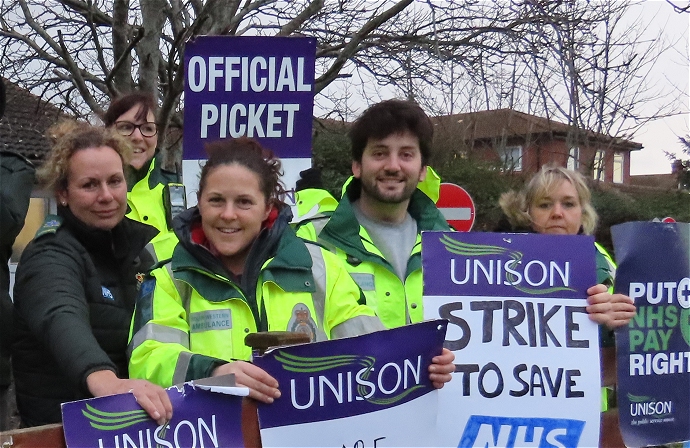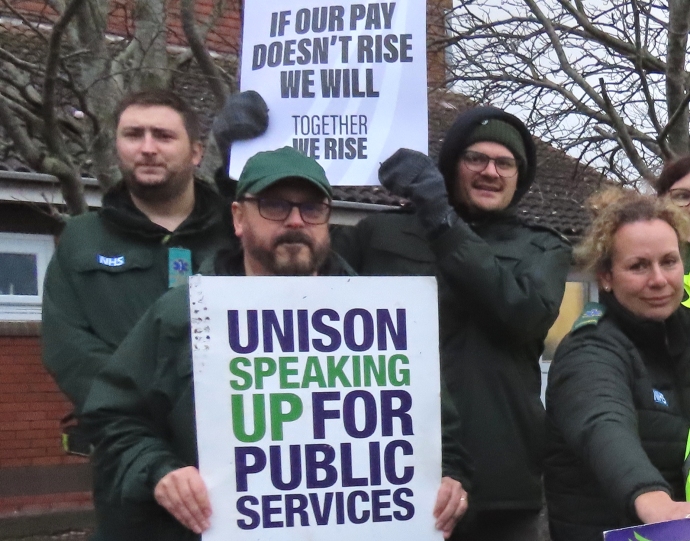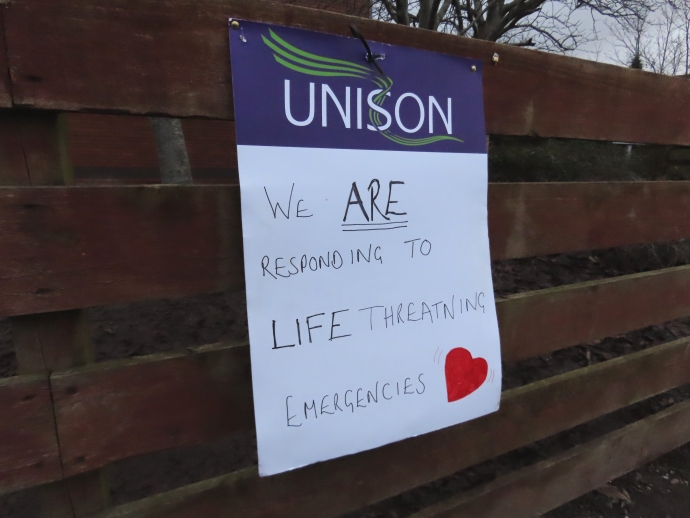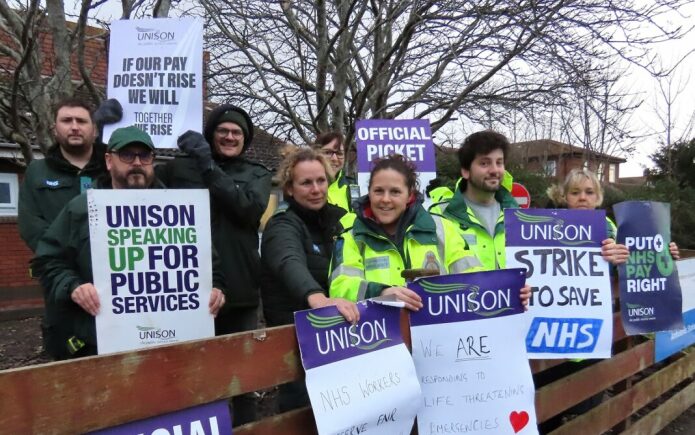Burnham-On-Sea ambulance staff joined about 25,000 across England and Wales in striking on Wednesday (January 11th) during the ongoing dispute with the government over pay and conditions.
Over a dozen members of ambulance staff in Burnham-On-Sea took part in the action, pictured here, with several joining the picket line outside the station in Love Lane with banners, as pictured here.
A Burnham ambulance station staff member told Burnham-On-Sea.com: “We had a huge amount of warm support through the day. Motorists were beeping their horns in support as they drove by and many local residents popped by to give us their backing.”

“We still responded to urgent, high category incidents – such as cardiac arrests and strokes and outdoor incidents – to maintain a service across the Burnham-On-Sea area.”
Staff took part in the industrial action for the second time in two months, calling for a wage rise closer to inflation.
They also spoke about fighting for a better service for patients as the most recent data up until the first week of January shows the South West has some of the slowest handover times in the country.

The strike action across the UK included paramedics, call handlers, drivers and technicians from the Unison and GMB unions.
Talks were held with Health Secretary Steve Barclay on Monday but no agreements reached. The discussions centred on what could be done for staff in 2023-24, but the unions said they will not discuss next year until their demands are met this year.
A third ambulance strike is set to take place on 23rd January, with the Burnham-On-Sea station staff saying they will be taking part.

Health and Social Care Secretary Steve Barclay said: “Wednesday’s ambulance strike was an unwelcome return to unnecessary disruption and comes at a time when the NHS is already under huge pressure from COVID and flu.”
“While we have contingency plans in place, including support from the military, community first responders and extra call handlers, to mitigate risks to patient safety, there will inevitably be some disruption for patients with fewer ambulances on the road.”












